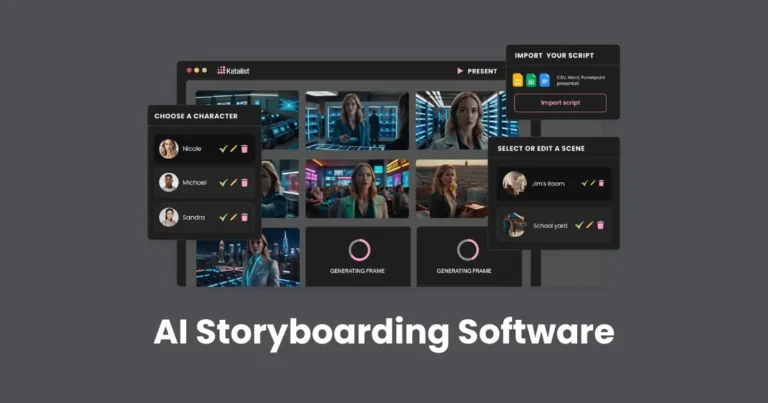Core Elements in Video Ads | Why These Core Elements Matter

Contents
- 1 The Importance of Video Ads
- 2 Core Elements in Video Ads
- 3 Why These Core Elements Matter
- 4 How to Incorporate Core Elements Effectively
- 4.1 Develop a Strong Narrative and Focus on Storytelling
- 4.2 Prioritize Clear and Concise Messaging
- 4.3 Leverage Visual Appeal to Create Brand Recognition
- 4.4 Craft a Persuasive Call to Action (CTA)
- 4.5 Maintain Consistent Branding
- 4.6 Use Music and Sound Effects Strategically
- 4.7 Personalize the Content for the Target Audience
- 4.8 Conclusion
In the competitive world of digital marketing, understanding the core elements in video ads is essential for creating compelling and effective campaigns. Video ads are among the most powerful tools for capturing attention and delivering a brand’s message. As consumer preferences shift towards more engaging and interactive content, video ads have become an indispensable part of any advertising strategy. By focusing on the core elements in video ads, marketers can craft ads that not only grab the viewer’s attention but also drive significant action, whether it’s brand awareness, engagement, or conversions. In this article, we will explore the key components that make up successful video ads and why they are vital for creating impactful marketing campaigns.
The Importance of Video Ads
Video ads have become one of the most effective forms of advertising in today’s digital landscape. With the rise of platforms like YouTube, Instagram, Facebook, and TikTok, video content has become a dominant force in capturing consumer attention. The importance of video ads lies not only in their ability to engage viewers but also in their proven effectiveness in driving consumer behavior.

Unlike static advertisements, video ads allow for the combination of visuals, sound, and motion, which significantly enhance the emotional appeal and storytelling potential of a brand. This dynamic nature enables businesses to create a deeper connection with their audience, fostering brand loyalty and trust.
In fact, studies show that video content is 1200% more likely to be shared than text and images combined, highlighting the immense power of video ads in amplifying brand reach. Additionally, platforms like social media have made video ads more accessible to a broad audience, making it easier for companies of all sizes to use video content in their marketing strategies.
Moreover, the core elements in video ads play a crucial role in making these ads effective. When crafted with care and purpose, these elements can help businesses deliver clear messages, engage their target audience, and achieve higher conversion rates. As video continues to dominate the digital space, understanding the importance of video ads and their core components is key to staying ahead of the competition.
Core Elements in Video Ads
Creating an effective video ad goes beyond just producing a video; it’s about carefully incorporating specific core elements in video ads that work together to capture attention, engage the audience, and drive action. By focusing on these elements, marketers can ensure their video ads stand out in a crowded digital space. Let’s explore the key components that make up successful video ads.
Compelling Storytelling
One of the most powerful core elements in video ads is storytelling. A captivating story helps build an emotional connection between the brand and the viewer. This connection can be the difference between an ad that is quickly forgotten and one that sticks in the viewer’s mind long after the video ends.
The story should resonate with the audience’s values, pain points, or desires, allowing them to see themselves in the narrative. Whether it’s solving a problem or evoking an emotion, a good story can engage viewers right from the start and keep them interested until the end.
A compelling story doesn’t need to be overly complex, but it should feel authentic and relatable. Ads that tell a story often perform better because they create a sense of anticipation, keeping the viewer engaged and encouraging them to take action.
Clear and Concise Messaging
Another crucial element in video ads is clear and concise messaging. It’s important to communicate the message in a way that is easy to understand and leaves no room for ambiguity.
The messaging should align with the brand’s values, and it should be designed to highlight the benefits of the product or service in a way that feels natural. A clear message is not only effective in informing the audience, but it also minimizes confusion, which could otherwise lead to disengagement.
Whether it’s a call to action, a product feature, or a brand promise, the message should be succinct and powerful. Videos with overly complex or convoluted messages risk losing the viewer’s attention, which defeats the purpose of the ad.
Visual Appeal
Incorporating strong visual elements is another one of the core elements in video ads. Since video ads are dynamic by nature, they have the unique advantage of capturing attention through visual storytelling. The use of colors, graphics, and special effects can enhance the ad’s impact and make it more memorable.
A visually appealing video can help create a distinct brand identity, making it easier for consumers to recognize and relate to the brand. Consistency in visual style, whether through a specific color palette or design elements, helps reinforce the brand’s identity and strengthens brand recall.
Moreover, high-quality visuals can elevate the overall production value of the ad, making it feel more professional and trustworthy.
Call to Action (CTA)
A strong call to action (CTA) is a critical component in the success of video ads. The CTA serves as a direct instruction for what the viewer should do next—whether it’s visiting a website, making a purchase, or subscribing to a newsletter. Without a clear CTA, viewers might enjoy the video but have no idea what step to take after watching.
It should be direct, actionable, and compelling. For example, phrases like “Shop Now” or “Learn More” prompt the viewer to take the next step in the customer journey.
Branding and Consistency
Branding is one of the core elements in video ads that helps establish the ad’s identity. A strong brand presence throughout the ad reinforces recognition and builds familiarity with the audience. The brand’s logo, colors, tone, and messaging should be consistent across all touchpoints to maintain brand integrity.
Consistency in branding helps build trust and makes the ad feel like a natural extension of the brand’s other marketing efforts. Whether through visual cues or tone of voice, the ad should clearly reflect the personality and values of the brand.
When branding is consistent, it ensures that the viewer associates the message and the ad with the brand itself, which is crucial for long-term recognition and customer loyalty.
Music and Sound Effects
Music and sound effects are often overlooked in video ads, but they are essential core elements in video ads that contribute significantly to the overall viewer experience. The right music can evoke the desired emotion, set the tone, and reinforce the message being conveyed.
For instance, upbeat music can create a sense of excitement and energy, while slower, more emotional music can help connect with the audience on a deeper level.
Both music and sound effects should complement the ad’s message and visuals, never overpowering them. They should serve the narrative, enhancing the emotional connection with the viewer.
Targeting and Personalization
Effective video ads should be tailored to the specific audience they are intended for. Targeting and personalization are crucial core elements in video ads that ensure the content resonates with the right viewers.
With advances in data analytics and ad platforms, businesses can now create highly targeted video ads that reach the right demographic based on interests, behavior, and location. Personalization can take various forms, from addressing the viewer directly to showing products based on their past behavior or preferences.
Personalized video ads are more likely to capture the viewer’s attention because they feel relevant and specific. By understanding the target audience’s needs and desires, marketers can craft video ads that speak directly to those interests, leading to higher engagement and conversion rates.
These core elements in video ads are the building blocks of a successful advertising strategy. By ensuring that each component is thoughtfully executed, businesses can create video ads that resonate with their audience, stand out in a crowded digital landscape, and ultimately drive results.
Why These Core Elements Matter
The core elements in video ads are not just components that fill space in a marketing campaign—they are the driving forces that determine the success of the ad. Each element plays a critical role in ensuring that the ad achieves its intended objectives, whether it’s increasing brand awareness, driving conversions, or fostering consumer loyalty. Let’s dive into why these core elements matter so much.

Enhancing Audience Engagement
One of the primary reasons the core elements in video ads matter is their ability to boost audience engagement. A compelling story, clear messaging, and appealing visuals work together to capture and hold the viewer’s attention. In a world where consumers are bombarded with countless ads every day, making an ad that stands out and holds attention is essential for achieving engagement.
The combination of these elements ensures that the ad doesn’t just get watched, but that it resonates with the audience, prompting them to interact with the brand. An engaging video can result in viewers liking, sharing, or commenting on the content, thereby extending its reach beyond the initial viewership.
Building Emotional Connections
People connect with stories, emotions, and experiences, which is why compelling storytelling and emotional appeal are such important core elements in video ads. By evoking emotions such as joy, nostalgia, empathy, or excitement, video ads can form a deeper bond between the brand and the audience. This connection is often what turns casual viewers into loyal customers.
Emotionally-driven ads are more likely to be shared and remembered, as they resonate on a personal level. When a viewer feels emotionally connected to a brand, they are more likely to make a purchase or engage in a long-term relationship with that brand.
Boosting Brand Recall and Recognition
Branding and consistency are foundational elements that contribute to increasing brand recall and recognition. Consistent use of a brand’s visual identity, including logos, colors, and messaging, ensures that viewers immediately associate the ad with the brand.
Over time, this consistency builds familiarity, which is crucial for maintaining a strong presence in the minds of consumers. Studies show that ads with strong branding are 80% more likely to be remembered, which is why incorporating branding effectively within the video is essential for long-term success.
Driving Action with Clear CTAs
The presence of a well-crafted call to action (CTA) directly impacts how successful an ad will be in driving the viewer to take the next step. Whether the goal is to drive traffic to a website, encourage a sign-up, or generate sales, a clear and compelling CTA guides the audience toward the desired action.
Without a CTA, even the most visually stunning video ad risks leaving the viewer uncertain about what to do next. By including a strong CTA, businesses can ensure that their ad leads to tangible outcomes, turning passive viewers into active customers.
Improving Conversion Rates
The core elements in video ads are directly linked to improved conversion rates. A well-executed video ad that incorporates storytelling, clear messaging, strong branding, and a persuasive CTA is more likely to lead to conversions. These elements work together to guide the viewer through the customer journey, from awareness to decision-making.
Video ads that provide value, entertain, or address the needs and pain points of the target audience are more likely to prompt viewers to take action. Whether it’s making a purchase, signing up for a newsletter, or clicking on a link, the cohesive use of these elements can significantly boost conversion rates.
Optimizing Marketing Efficiency
By focusing on these core elements in video ads, marketers can optimize their advertising strategy. Clear and concise messaging, compelling storytelling, and precise targeting ensure that the ad is not just reaching an audience but the right audience. With the ability to measure video ad performance through platforms like Google Analytics and social media insights, businesses can see how their ads are performing and refine their strategies accordingly.
The core elements in video ads matter because they serve as the foundation for creating ads that not only capture attention but also engage and convert viewers into customers. By focusing on storytelling, clear messaging, visual appeal, CTAs, branding, and personalization, businesses can create ads that make a meaningful impact and achieve their marketing goals effectively.
How to Incorporate Core Elements Effectively
Incorporating the core elements in video ads is crucial for ensuring the ad is impactful, engaging, and successful in driving the desired outcome. Each element needs to be thoughtfully woven into the video to create a cohesive and persuasive message. Below are some strategies for effectively incorporating these core elements into your video ads.

Develop a Strong Narrative and Focus on Storytelling
To incorporate storytelling effectively, begin by developing a clear narrative that aligns with your brand’s message. Your story should have a beginning, middle, and end that resonates with the audience’s emotions.
- Know Your Audience: Understand your audience’s needs, pain points, and interests. Tailor the narrative to speak directly to these aspects, ensuring the story feels authentic and relatable.
- Simplify the Message: Avoid overly complex plots. Keep the story simple and focused on the core message you want to convey. Viewers should be able to understand and follow the story easily.
- Create Emotional Impact: Use storytelling techniques that evoke emotions. Whether it’s humor, empathy, or excitement, the goal is to create an emotional connection that keeps the viewer engaged.
By centering your video around a strong narrative, you can create a compelling story that not only captures attention but also fosters a deeper connection with your audience.
Prioritize Clear and Concise Messaging
Clear and concise messaging is crucial to prevent confusion and ensure that the viewer understands the purpose of the video. To incorporate this effectively:
- Define Your Goal: Before creating the ad, clearly define what you want to achieve. Are you trying to raise awareness, drive sales, or promote a new product? Having a clear goal will help you shape the message.
- Keep It Simple: Use simple, direct language that communicates the message quickly. Avoid jargon and overly complicated phrases that could confuse the viewer.
- Highlight Key Points: Focus on the most important aspects of your product or service. What sets it apart from competitors? What problem does it solve for the viewer? Make sure the audience leaves the video with a clear understanding of what’s being offered.
Incorporating clear and concise messaging will ensure that the viewer walks away from the video with a strong, understandable impression of your brand.
Leverage Visual Appeal to Create Brand Recognition
Visual elements play a major role in catching the viewer’s eye and reinforcing the brand’s identity. To effectively incorporate visual appeal:
- Use Consistent Branding: Ensure that your brand’s colors, logo, and fonts are included and consistent throughout the video. This helps reinforce brand recognition and creates a cohesive visual identity.
- Design for Impact: Use eye-catching visuals, animations, and graphics to highlight key elements of the story. However, avoid overwhelming the viewer with too much happening on screen at once. Simplicity is key.
- Make It Mobile-Friendly: Keep in mind that many viewers will watch your video on mobile devices. Ensure the visuals are optimized for smaller screens, with clear text and visible elements even on mobile.
By making your video visually appealing, you can attract and hold the viewer’s attention while strengthening your brand’s identity.
Craft a Persuasive Call to Action (CTA)
A clear and persuasive call to action (CTA) directs the viewer on what to do next. To incorporate the CTA effectively:
- Make It Stand Out: Position the CTA where it’s most likely to be noticed, typically towards the end of the video. It should be prominent, whether through on-screen text or a visual cue.
- Be Specific and Actionable: Use strong action words like “Shop Now,” “Sign Up Today,” or “Learn More.” The CTA should be clear about what you want the viewer to do.
- Create Urgency: Phrases like “Limited Time Offer” or “Get 20% Off Today” can encourage immediate action by instilling a sense of urgency.
- Optimize the Landing Page: Ensure that the link or landing page associated with the CTA is seamless. When the viewer clicks on it, they should be directed to a relevant, easy-to-navigate page where they can take the next step.
A well-placed and compelling CTA can guide the viewer toward conversion, turning engagement into a measurable result.
Maintain Consistent Branding
Incorporating consistent branding in video ads is essential for building recognition and trust. Here’s how to do it effectively:
- Visual Identity: Use your brand’s logo, color palette, and fonts throughout the video. These elements should be recognizable and tie the video to your overall brand presence.
- Tone of Voice: The language and tone should align with your brand’s personality. Whether your brand is formal, playful, or professional, maintaining a consistent tone helps strengthen your identity.
- Brand Values: Ensure that the messaging reflects your brand’s core values and mission. If your brand stands for sustainability, for example, your messaging should highlight this throughout the video.
By maintaining consistent branding, you ensure that the video ad feels like a natural part of your brand’s broader marketing strategy, which helps build trust with the audience.
Use Music and Sound Effects Strategically
To incorporate music and sound effects effectively, consider the following:
- Choose the Right Music: The music should complement the emotional tone of your video. Upbeat tracks work well for energetic or fun ads, while softer music is better suited for emotional or reflective content.
- Sound Design: Use sound effects to enhance the viewer’s experience. For example, if your ad features a product in action, incorporate realistic sound effects to make the scene feel more immersive.
- Pacing: The music and sound effects should match the pacing of the video. Too fast a tempo can overwhelm the viewer, while too slow can make the video drag.
Music and sound effects help create a sensory connection with the viewer and add an extra layer of engagement to the video.
Personalize the Content for the Target Audience
Personalization is a powerful tool to increase relevance and viewer engagement. To incorporate personalization effectively:
- Segment Your Audience: Use data analytics to segment your audience by demographics, behavior, or interests. This allows you to tailor the content of the video to different segments of your target market.
- Speak to Their Needs: Customize the messaging and visuals to address the specific needs, pain points, or desires of each audience segment. Show them how your product or service can solve their problems.
- Dynamic Ads: Consider using dynamic video ads that change based on user data, allowing the ad to adapt to each viewer’s interests and behaviors.
Personalizing your video ads will help ensure they are relevant to the viewer, increasing the likelihood of engagement and conversion.
Incorporating these core elements in video ads effectively requires thoughtful planning and execution. By aligning each element with the overall goals of the campaign, marketers can create video ads that are not only engaging and visually appealing but also result in higher conversions and brand loyalty. Whether it’s through strong storytelling, clear messaging, compelling CTAs, or consistent branding, each core element plays a pivotal role in the success of a video ad.
Conclusion
In conclusion, mastering the core elements in video ads is essential for creating engaging, effective, and impactful campaigns. Each element—whether it’s the storytelling, messaging, visuals, call to action, or branding—plays a crucial role in ensuring that the video not only captures attention but also drives the desired outcome. By focusing on these key components, marketers can craft ads that resonate with viewers, build emotional connections, and ultimately lead to higher engagement and conversions.
To incorporate these elements effectively, it’s important to tailor the video to your target audience, maintain consistency across branding, and optimize for clear, concise communication. The right combination of storytelling, visuals, and persuasive calls to action can transform an ordinary video into a powerful marketing tool that achieves both short-term results and long-term brand loyalty.
When done right, video ads that focus on these core elements can become a driving force in your marketing strategy, helping you stand out in a competitive digital landscape. So, ensure that you prioritize these elements in your next video campaign to maximize its impact and achieve your marketing goals.






